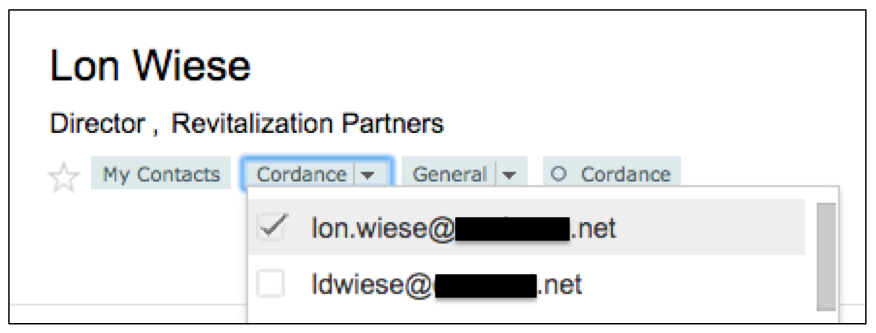Over the past year, I have been so engrossed in building decentralized digital trust infrastructure that I haven’t made a single post on this blog. But this morning, in a newsletter from The Atlantic, I read an editorial by Tom Nichols that struck me as so important that I am republishing it here in its entirety.
*****
I began the morning, as I often do, with a cup of coffee and a discussion with a friend. We were talking about last week’s nuclear warnings from Russian President Vladimir Putin, and while we were on the subject of unhinged threats, I mentioned Donald Trump’s bizarre statement over the weekend that Senate Minority Leader Mitch McConnell had a “DEATH WISH,” with a racist slam on McConnell’s wife, Elaine Chao, added in for good measure.
“Oh, yeah,” my friend said. “I’d forgotten about that.” To be honest, so had I. But when I opened Twitter today, The Bulwark publisher Sarah Longwell’s tweet that “we are still under-reacting to the threat of Trump” jumped out at me. She’s right.
We are also, in a way, underreacting to the war in Ukraine. Our attention, understandably, has become focused on the human drama. But we are losing our grip on the larger story and greater danger: Russia’s dictator is demanding that he be allowed to take whatever he wants, at will and by force. He is now, as both my colleague Anne Applebaum and I have written, at war not only with Ukraine, but with the entire international order. He (like his admirer Trump) is at war with democracy itself.
And somehow, we have all just gotten used to it.
We are inured to these events not because we are callous or uncaring. Rather, people such as Trump and Putin have sent us into a tailspin, a vortex of mad rhetoric and literal violence that has unmoored us from any sense of the moral principles that once guided us, however imperfectly, both at home and abroad. This is “the widening gyre” W. B. Yeats wrote about in 1919, the sense that “anarchy is loosed upon the world” as “things fall apart.”
For many years, I have often felt this way in the course of an ordinary day, when it seems as if I am living in a dystopian alternate universe. A time of hope and progress that began in the late 1980s was somehow derailed, perhaps even before the last chunks of the Berlin Wall’s corpse were being cleared from the Friedrichstrasse. (This was a time, for example, when we started taking people like Ross Perot seriously, which was an early warning sign of our incipient post–Cold War stupor.) Here are some of the many moments in which I have felt that sense of vertigo:
- In my lifetime, I have seen polio defeated and smallpox eradicated. Now hundreds of thousands of Americans are dead—and still dying—because they refused a lifesaving vaccine as a test of their political loyalty to an ignoramus.
- After living under the threat of Armageddon, I saw the Soviet flag lowered from the Kremlin and an explosion of freedom across Eastern Europe. An American president then took U.S. strategic forces off high alert and ordered the destruction of thousands of nuclear weapons with the stroke of a pen. Now, each day, I try to estimate the chances that Putin, one of the last orphans of the Soviet system, will spark a nuclear cataclysm in the name of his delusional attempt to turn the clock back 30 years.
- As a boy in 1974, I delivered the newspaper that announced the resignation of Richard Nixon, who was driven from office in a political drama so wrenching that part of its name—Watergate—has become a suffix in our language for a scandal of any kind. Now the front-runner for the Republican presidential nomination is a former president who is a walking Roman candle of racist kookery and unhinged conspiracy theories, who has defied the law with malicious glee, and who has supported mobs that wanted to kill his vice president.
Against all this, how can we not be overwhelmed? We stand in the middle of a flood of horrendous events, shouted down by the outsize voices of people such as Trump and his stooges, enervated and exhausted by the dark threats of dictators such as Putin. It’s just too much, especially when we already have plenty of other responsibilities, including our jobs and taking care of our loved ones. We think we are alone and helpless, because there is nothing to convince us otherwise. How can anyone fight the sense that “the center cannot hold”?
But we are not helpless. The center can hold—because we are the center. We are citizens of a democracy who can refuse to accept the threats of mob bosses, whether in Florida or in Russia. We can and must vote, but that’s not enough. We must also speak out. By temperament, I am not much for public demonstrations, but if that’s your preferred form of expression, then organize and march. The rest of us, however, can act, every day, on a small scale.
Speak up. Do not stay silent when our fellow citizens equivocate and rationalize. Defend what’s right, whether to a friend or a family member. Refuse to laugh along with the flip cynicism that makes a joke of everything. Stay informed so that the stink of a death threat from a former president or the rattle of a nuclear saber from a Russian autocrat does not simply rush past you as if you’ve just driven by a sewage plant.
None of this is easy to do. But we are entering a time of important choices, both at home at the ballot box and abroad on foreign battlefields, and the center—the confident and resolute defense of peace, freedom, and the rule of law—must hold.
*****
Amen.




 I just flew United non-stop from Seattle to Washington D.C. (Dulles) and back. I realized too late after booking the trip that this was the airline on which I had never successfully connected to their in-air wifi. Since it was a five hour flight, I decided I would bear down this time and finally fix the problem (after all, I’ve worked in the Internet business for over 20 years).
I just flew United non-stop from Seattle to Washington D.C. (Dulles) and back. I realized too late after booking the trip that this was the airline on which I had never successfully connected to their in-air wifi. Since it was a five hour flight, I decided I would bear down this time and finally fix the problem (after all, I’ve worked in the Internet business for over 20 years). I joke with Phil Windley that half my blog posts are about his blog posts. But there’s a good reason for that. Phil’s a prolific blogger because he’s a prolific thinker, and there is a very high signal-to-noise ratio in those thoughts.
I joke with Phil Windley that half my blog posts are about his blog posts. But there’s a good reason for that. Phil’s a prolific blogger because he’s a prolific thinker, and there is a very high signal-to-noise ratio in those thoughts.
 I don’t think I’ve had such a good time at the movies since Little Miss Sunshine. If you just want to smile—and laugh—and clap—and feel like dancing all over the theatre—don’t miss this. And don’t watch it at home (which you will want to do a thousand times) until you’ve had the full movie theatre experience.
I don’t think I’ve had such a good time at the movies since Little Miss Sunshine. If you just want to smile—and laugh—and clap—and feel like dancing all over the theatre—don’t miss this. And don’t watch it at home (which you will want to do a thousand times) until you’ve had the full movie theatre experience. Ironically, this post has nothing to do with my company going live with eShares online equity management service yesterday. The only connection is that it may be the reason (in some scary way I haven’t figure out yet) that
Ironically, this post has nothing to do with my company going live with eShares online equity management service yesterday. The only connection is that it may be the reason (in some scary way I haven’t figure out yet) that 









